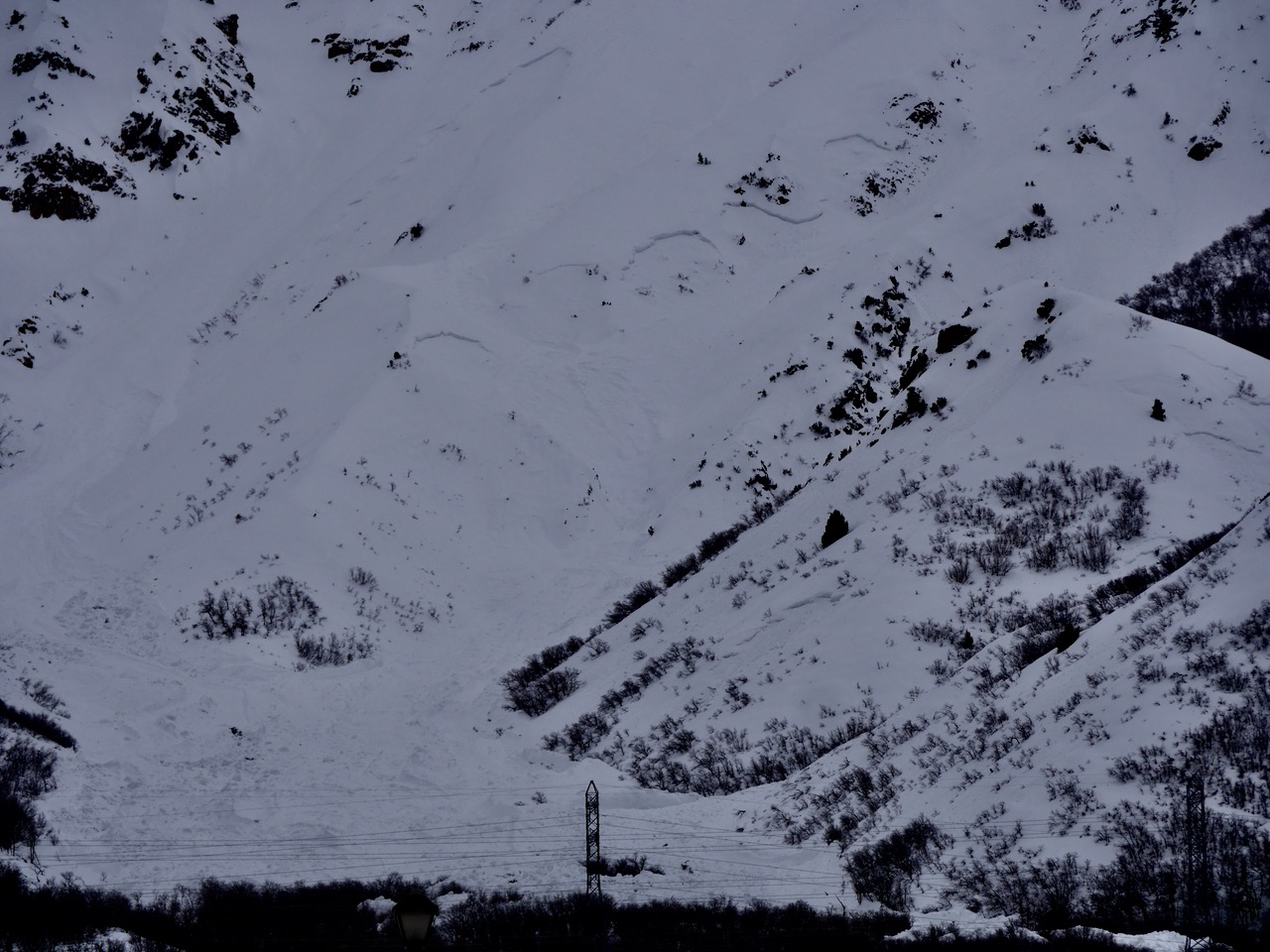Forecast for the Logan Area Mountains

Issued by Toby Weed on
Monday morning, April 3, 2023
Monday morning, April 3, 2023
Heightened avalanche conditions are found at all elevations on backcountry slopes steeper than 30°. Heavy snowfall will elevate the danger to CONSIDERABLE, with dangerous conditions, especially in drifted mid and upper elevation terrain. Large natural cornice falls are possible, and these or people are likely to trigger 1' to 3' thick and 100-200' wide slab avalanches of storm snow. We will find very nice deep powder riding conditions in lower angle terrain and in the meadows out from under steep slopes.
Dangerous avalanche conditions dictate careful snow and terrain evaluation as well as cautious decision making.

Low
Moderate
Considerable
High
Extreme
Learn how to read the forecast here




 Very large natural avalanches occurred early Friday above Pleasant View and North Ogden, coming off the very steep Ben Lomond Headwall.
Very large natural avalanches occurred early Friday above Pleasant View and North Ogden, coming off the very steep Ben Lomond Headwall. 



